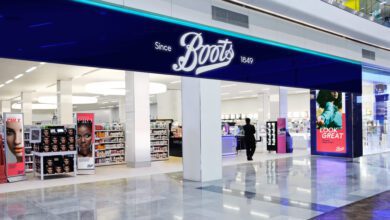Online retailers and the battle for e-commerce customer experience

Register to get 1 free article
Reveal the article below by registering for our email newsletter.
Want unlimited access? View Plans
Already have an account? Sign in
The digital experience is becoming increasingly integral to the retail industry, and with the holiday period on the horizon, it’s particularly essential for retailers to ensure a smooth customer journey.
Online retail success during the peak traffic season can depend on the ability to monitor cloud-based components, from (Domain Name Server) DNS and anti-Distributed Denial of Service (DDoS) providers to Infrastructure-as-a-Service (IaaS) vendors. Visibility into the effectiveness of these services will ensure the Christmas retail experience doesn’t result in a lump of coal in one’s stocking.
Omni-channel retail strategies come in many forms. Whether you’re a pure e-commerce store or integrating bricks and mortar with apps and online platforms, one of the lessons of the £50bn, 2017 holiday season is that the impact of the digital experience on retail is growing around the world.
Mobile is a big part of the picture, pushing retailers to place a greater importance on ensuring websites are mobile compatible. It also highlights the popularity of shopping apps, which drove mobile to account for half of online sales in Europe.
According to Akamai’s State of Online Retail report, Black Friday and Cyber Monday made a material difference in the U.K., Germany, France and Spain in 2017—with the U.K. experiencing a 42% increase in online conversion rates on Black Friday of 2017 when compared to 2016.
As the 2018 Christmas and holiday shopping season approaches, it’s critical to not only enrich digital experience, but to ensure its reliability by gaining complete control and visibility over your extended IT infrastructure to make sure that during this busy period, nothing goes wrong.
With fierce competition in the industry and consumers’ expectations constantly becoming more expecant than ever before, there are several ways retailers can ensure their customer journey is as smooth as possible.
Ensuring a Smooth Online Customer Journey
With the growing popularity of e-commerce comes an increased pressure on retailers to ensure their online customer journey is seamless, taking consumers from browsing to purchase without losing them to a competitor only a few clicks away.
To create more compelling customer journeys, retailers are increasingly employing third-party software elements to enhance their digital customer experience. The 2018 Retail Systems Research report sponsored by Yottaa found that e-commerce sites increased use of such Software as a Service (SaaS) third-parties by 50% year on year to keep in the race on delivering rich web shopping experiences.
A troubling trend noticed in the report as a result of this rise was the declining performance of e-commerce sites, mainly due to the impact of all those third party elements from all over the Internet.
As online retailers battle to keep their digital offering at the forefront of the industry the rapid growth in third-party functionality brings with it a further challenge; monitoring external dependencies. Delivering a superior digital experience requires being aware of and reacting to all the external factors including but not limited to third party SaaS that impact both user experience.
External Factors Affecting the Online Customer Journey
- ‘This Site Can’t Be Reached’
The first step in any e-commerce journey is typing in a URL and the Internet figuring out how to get to that server. If that website name can’t be quickly resolved into a computer-readable Internet address, the journey ends with a “This Site Can’t Be Reached” error message.
The problem is that servers that do this website name to address conversion (known as Domain Name Servers) are distributed, can suffer slowdowns, and can be attacked. Hackers can hijack website names and cause traffic to be redirected away from your site. These risks and vulnerabilities doesn’t just apply to users trying to connect to your website’s front door, they apply to all those third party sites that your website calls upon for rich functionality.
Aside from the more dire scenarios, delays in website name resolution can lead to slow load times that are a major factor in retail loss, as tests from Amazon show that even a one second delay could cost them £1.2bn ($1.6bn) a year.
- Internet service provider (ISP) Outages
Across the internet there are numerous causes of outages that you don’t control, and if traffic can’t be routed to your site or to your third-party providers, you’ll suffer an outage to anywhere from a portion to the entirety of your e-commerce site or digital service delivery platform. It goes without saying that this severely hampers online sales, not only at that point but will harm a retailer’s reputation for online experience for future purchases too.
- Content Delivery Network (CDN) and public cloud providers
At least part of your website’s functionality is likely to be hosted hosted in servers that live in public cloud providers like AWS, Microsoft Azure and Google Cloud Platform (GCP).
Each of these providers operates large backbone networks and multiple data centers that are a world unto themselves, though highly connect to the Internet. Beyond the origin servers in public cloud providers, you’ll likely also rely on Content Distribution Network (CDN) providers like Akamai and Cloudflare to store copies of your ecommerce site files closer to end users to deliver a better experience. Visibility into whether users are connecting to the right CDN servers, or if your cloud providers are performing is also key to delivering a smooth customer experience.
Network Visibility is Key to Measure Online Customer Experience
With so much of a retailer’s network outside of their control, network visibility into “connected experiences” is critical. Traditional network visibility was only designed to handle the network infrastructure that you own and operate.
However modern network visibility extends into networks, infrastructure and services that are well outside your enterprise’s four walls.
As retailers look to prepare for the holiday season ahead, these external dependencies will become integral to monitor. With 30% or more of retail revenues dependent on the holiday sales and with digital experience the lynch-pin of modern retail, the right kind of network visibility is key to both the top and bottom line of retail holiday success.
By Alex Henthorn-Iwane, vice president of product marketing at ThousandEyes, which as a deep experience in networking, internet routing and SaaS.







